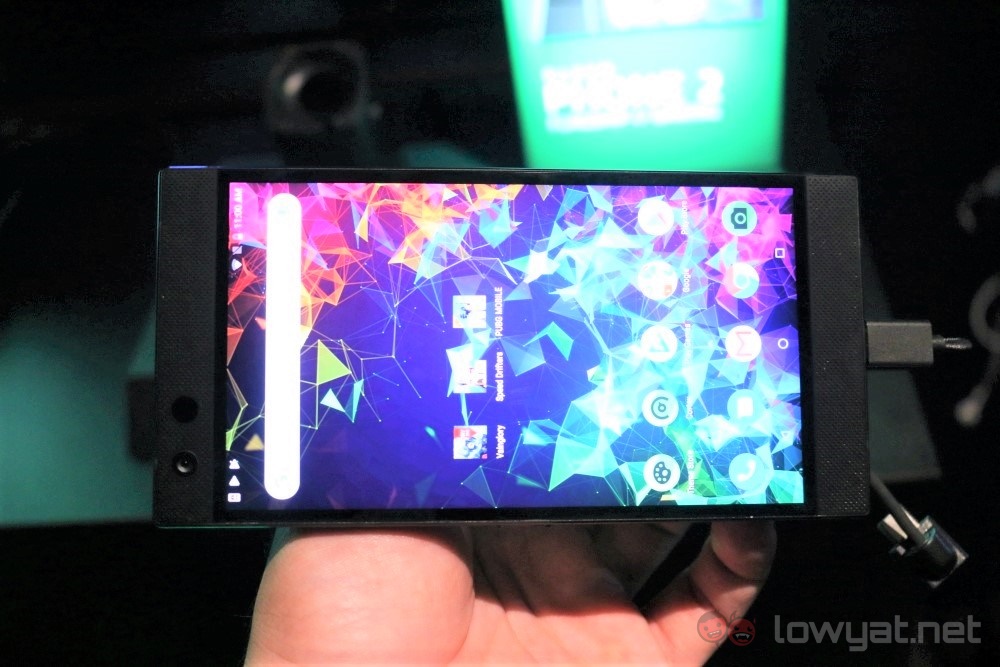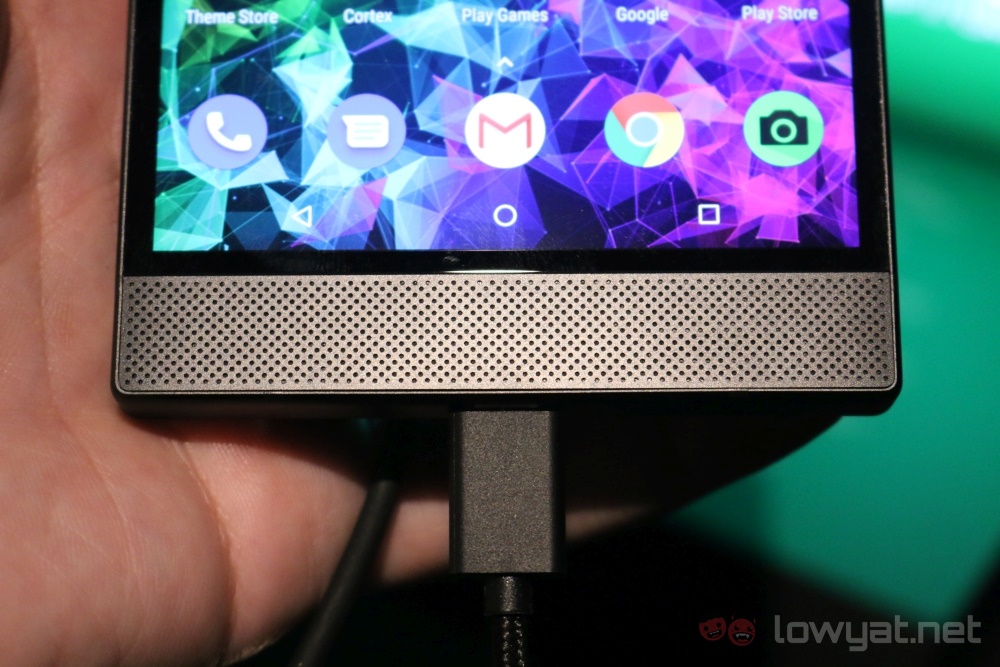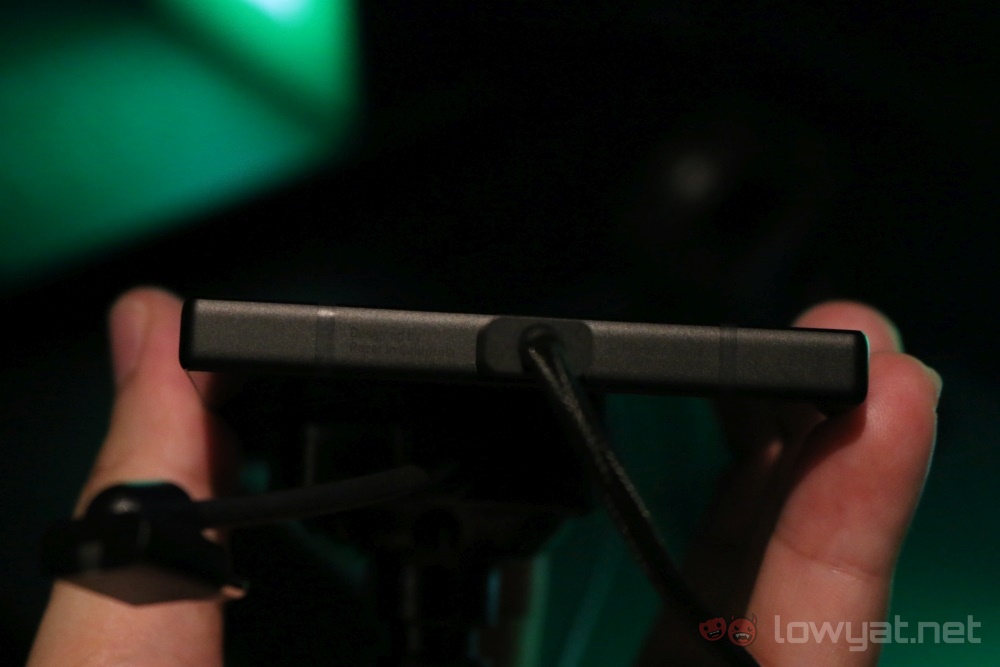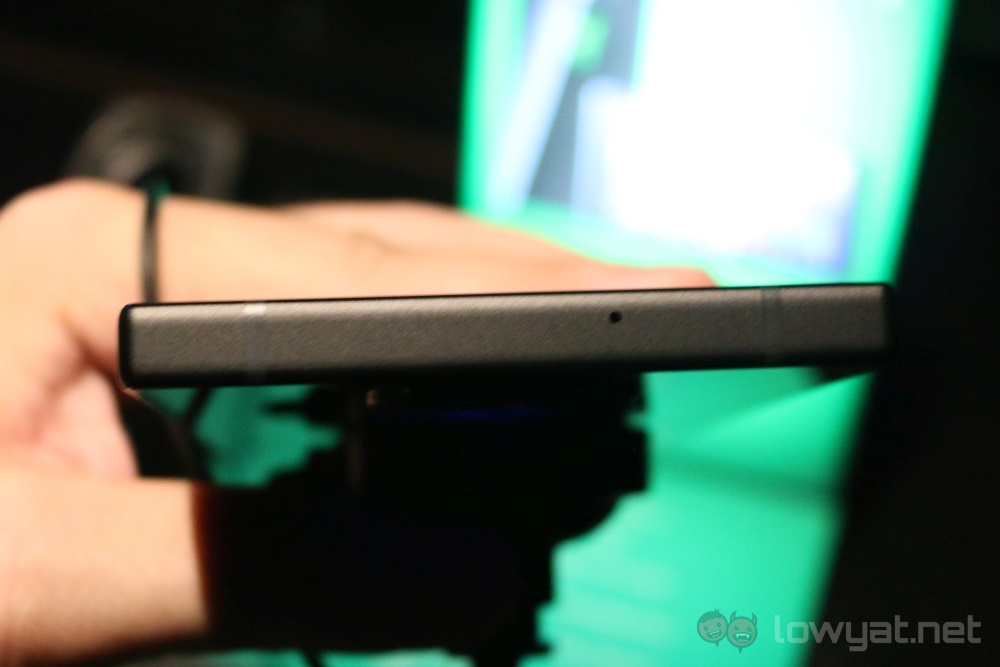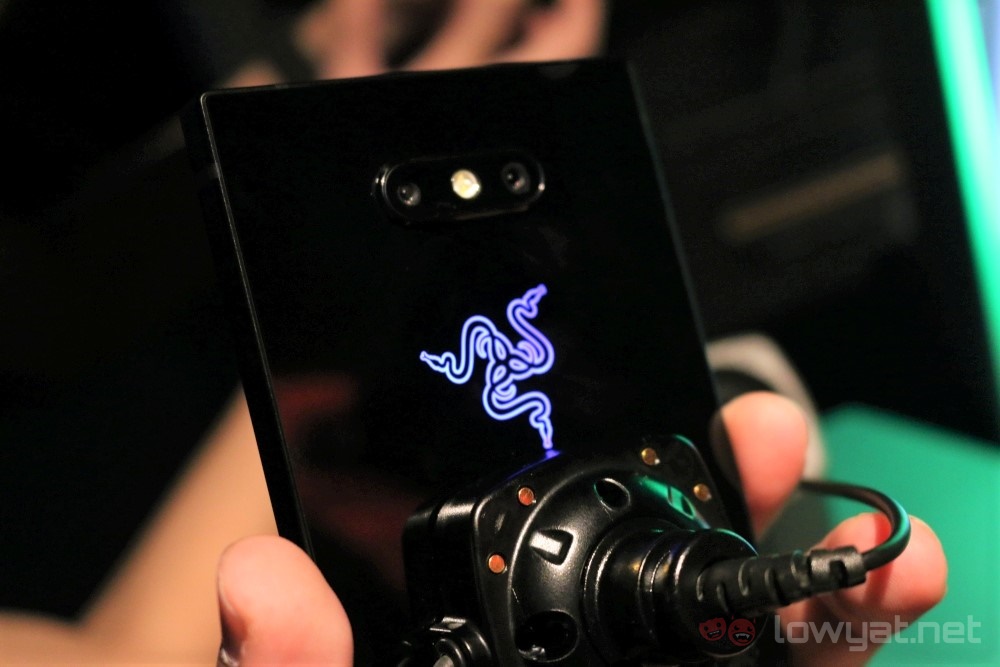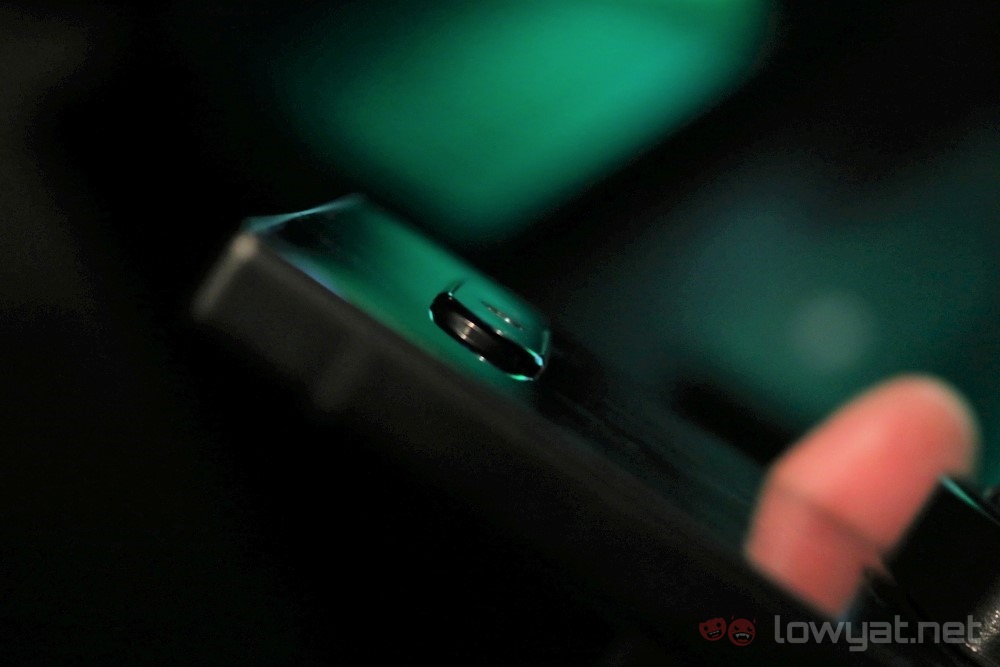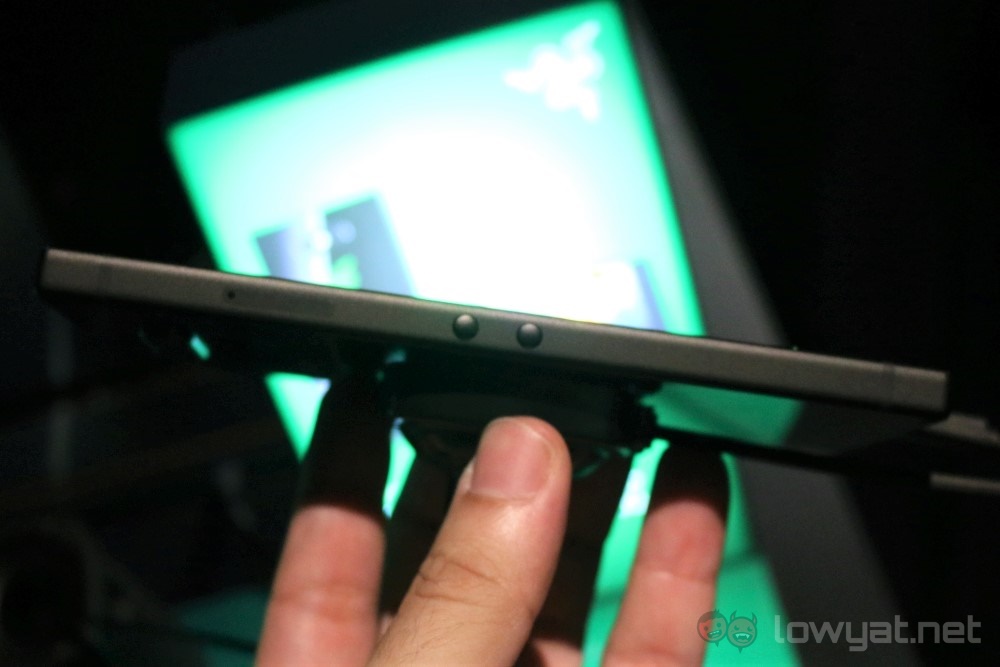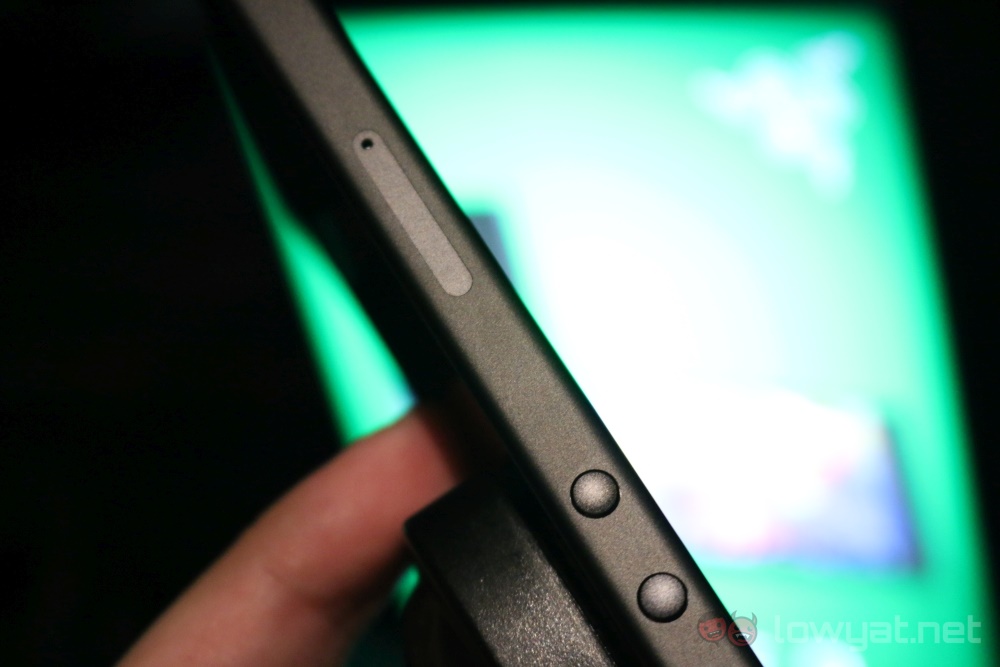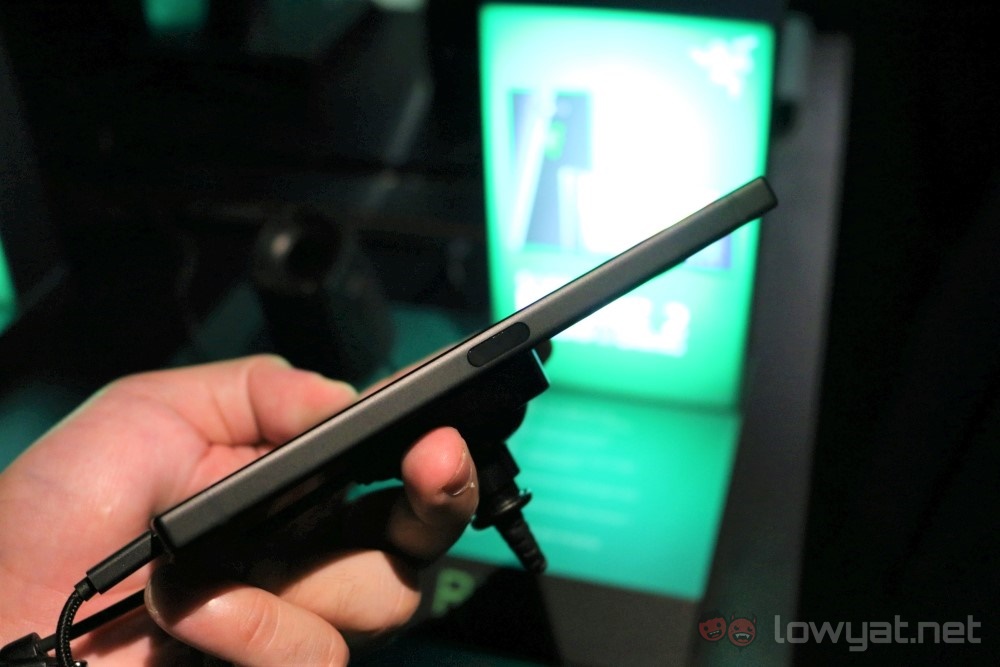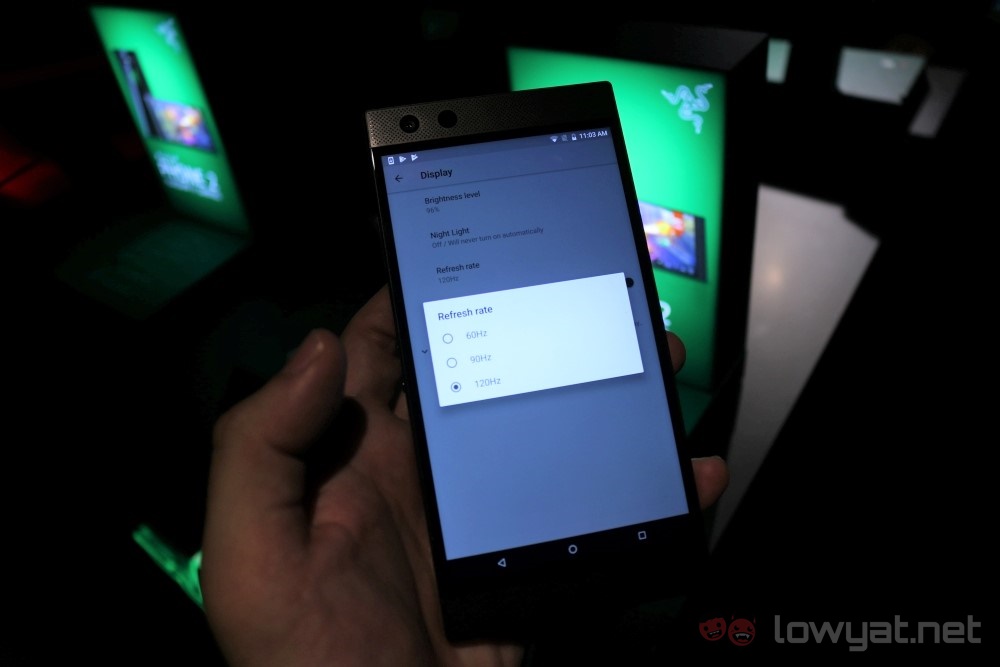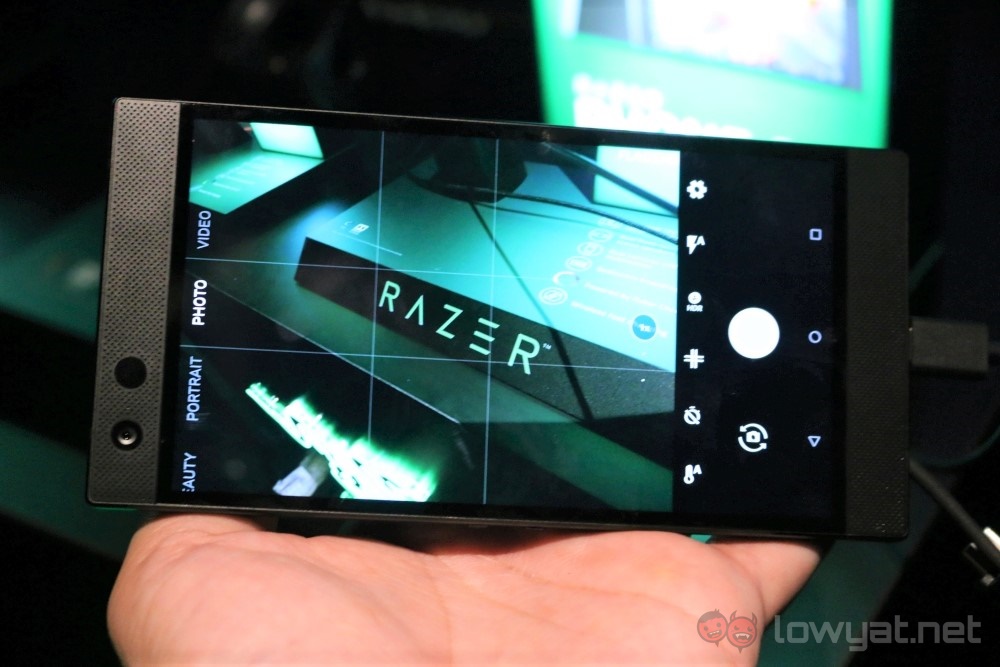Now that the phone has officially launched in Malaysia, we spent some time with the phone to get a feel of what it’s like in our hands.
To start, it sports thick bezels at the top and the bottom – a design choice that you don’t see all that often anymore. But it’s done for good reason, and that reason are the stereo speakers situated at the top and bottom of the display. That said, the event floor where the phone was launched was not a good place for us to judge speaker performance, so we weren’t able to conduct a proper test on it. The thick bezels also has the added benefit of making it a little more comfortable to hold in landscape mode. And when you’re not holding it in landscape mode, it’s a good place to place the front facing camera, negating the need to place notches or cutouts on the display. The phone looks sturdy and certainly feels the part. However, and despite these qualities, it also feels a lot lighter than I was expecting.
Round the bottom we see the sole USB-C port. With the top of the phone also looking plain; a blatant reminder that the Razer Phone 2 comes without a 3.5mm jack.
Round the back, we see the dual 12MP camera setup, as well as the Razer logo with Chroma lighting. It seems that Razer does not provide a case in the box, so you’ll have to be careful about the unfortunate camera bump.
The volume rocker on the left side are split between two very small buttons. While this choice of design will clearly mitigate accidental presses on them, I can’t help but feel that they should be a little bigger, just so that they’re more comfortably accessible by right-handed people.
On the flip side, the power button and fingerprint sensor combo is at the best possible position, at least for a right hander. Because it’s placed almost exactly at the middle, you can allow the bottom-right corner of the phone to rest on your palm, and your thumb still sits perfectly on the fingerprint sensor. As a result, you don’t have to grip the sides with the entirety of your palm, or use your pinky as a support for the phone to prevent it from falling.
Then we get to one of the Razer Phone 2’s key features – the 120Hz display. You actually have the option to choose between 60Hz, 90Hz and 120Hz refresh rates. As it is, scrolling through the display at 60Hz already looks pretty smooth, so going from 60Hz to 120Hz is like the sun and moon. You’ll likely appreciate the difference the other two options present when playing games, but I personally could not tell the difference between the 90Hz and 120Hz refresh rates.
The camera also comes with a lot of options. This includes portrait and beauty modes which are getting more and more commonplace. On the other hand, you’re given the option to adjust the colour temperature, a feature that is still surprisingly rare among smartphone camera software. That said, we didn’t get the opportunity to test the camera out much due to the less-than-conducive lighting.
Given everything we knew about the Razer Phone 2, we’d really love to find out what exactly it can do when we put it through its paces. On a personal level, I would especially love to find out if it can live up to Razer’s claims of it having the loudest speakers despite also having an IP67 rating, which is more impressive than it sounds.
